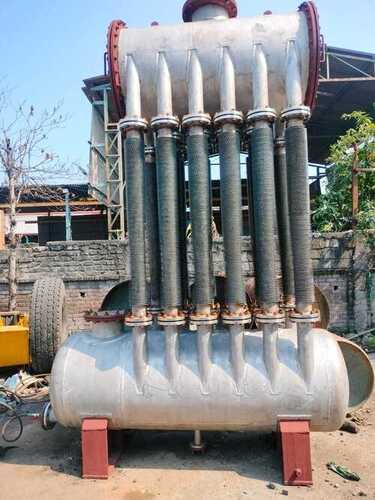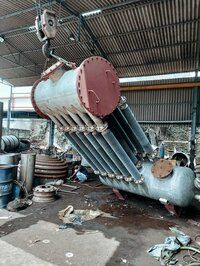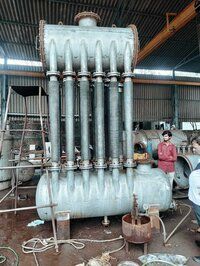Air Cool Reflux Condenser
900000 INR/Number
Product Details:
X
Air Cool Reflux Condenser Price And Quantity
- 1 Number
- 900000 INR/Number
Air Cool Reflux Condenser Trade Information
- hajira,porbandar
- 10 Number Per Month
- 10 Days
- as per product
- All India
Product Description
An aircooled reflux condenser is a specific type of condenser used in chemical and industrial processes particularly in distillation operations where reflux is employed Heres an explanation of its purpose function and design
Purpose and Function
1 Condensation The primary function of an aircooled reflux condenser is to condense vapor back into liquid form In distillation processes vaporized components typically from a boiling liquid mixture rise up the distillation column The reflux condenser cools these vapors causing them to condense into liquid form
2 Reflux Reflux condensers are specifically used to return a portion of the condensed liquid reflux back to the top of the distillation column This reflux enhances separation efficiency by increasing the contact between vapor and liquid phases allowing for better purification of the desired component
Design and Features
1 AirCooled Design Unlike traditional condensers that use water for cooling watercooled condensers aircooled reflux condensers use ambient air for cooling purposes This design eliminates the need for a continuous supply of cooling water making them suitable for locations where water availability or quality is limited
2 TubeandFin Configuration Aircooled reflux condensers typically consist of a bundle of finned tubes The vapor flows through these tubes while ambient air is blown across the finned surface to cool the tubes and condense the vapor
3 Efficiency Considerations The design of aircooled reflux condensers focuses on maximizing heat transfer efficiency between the vapor and the ambient air This efficiency is crucial for achieving adequate condensation rates and maintaining process performance
4 Materials These condensers are often made from materials such as stainless steel or aluminum chosen for their corrosion resistance and heat transfer properties
Applications
1 Chemical Industry Used in chemical processing plants for distillation of various chemical compounds where water availability is limited or environmental concerns restrict the use of watercooled systems
2 Petrochemical Industry Employed in refining processes to separate and purify different fractions of crude oil or petroleum products
3 Pharmaceutical Industry Utilized in pharmaceutical manufacturing for the purification of active ingredients and intermediates
Advantages
1 Water Conservation Aircooled reflux condensers reduce water consumption compared to traditional watercooled condensers making them environmentally friendly and costeffective in areas with water scarcity
2 Simplified Design They eliminate the need for water supply cooling towers and associated infrastructure simplifying the overall system design and operation
3 Versatility Suitable for a wide range of applications and industries where efficient condensation and reflux are required even in remote or waterlimited locations
Considerations
1 Cooling Capacity Adequate airflow and cooling capacity must be ensured to achieve efficient condensation rates especially in environments with high ambient temperatures
2 Maintenance Regular cleaning and maintenance of the finned tubes and air filters are necessary to prevent fouling and maintain optimal heat transfer efficiency
Conclusion
An aircooled reflux condenser plays a critical role in enhancing the efficiency of distillation processes by efficiently condensing vapors and facilitating reflux Its design focuses on using ambient air for cooling making it suitable for environments where water availability is limited or where water conservation is a priority These condensers are integral components in various industrial processes ensuring reliable and efficient separation of components in liquid mixtures
Tell us about your requirement

Price:
Quantity
Select Unit
- 50
- 100
- 200
- 250
- 500
- 1000+
Additional detail
Mobile number
Email







